The 1902 Silver Dollar, particularly the 1902-O Morgan variant, is valued between $50-$65 in circulated condition and $100 to $5,300+ in uncirculated Mint State condition. Value depends on grade, mint mark (O, S, or no mark), condition, eye appeal, and strike quality. High-grade examples (MS-65 and above) command premium prices, with MS-67 specimens reaching top values. To determine your coin’s worth, examine wear on Liberty’s hair and eagle’s feathers, consult NGC or APMEX price guides, and consider professional grading certification for valuable pieces. The 1902-O mintage has good availability in uncirculated condition since many were preserved in mint bags, making lower-grade circulated examples relatively less valuable.
The 1902 Morgan Silver Dollar represents one of the most accessible entry points into classic American numismatics, yet certain specimens can command prices exceeding $10,000. With three mints producing these coins over a century ago, understanding the subtle differences between Philadelphia, New Orleans, and San Francisco strikes can mean the difference between a $35 coin and a four-figure treasure. Whether you’ve inherited a collection or discovered a silver dollar in an old estate, this comprehensive analysis breaks down exactly what your 1902 Morgan is worth today.
Understanding the 1902 Morgan Dollar Production
The 1902 Morgan Silver Dollar was struck during the final decade of the original series, with production spanning three United States Mint facilities. Philadelphia produced 7,994,000 pieces without a mint mark, New Orleans struck 8,636,000 coins bearing an “O” mint mark, and San Francisco contributed 1,530,000 pieces marked with an “S”—making it the scarcest of the three varieties.
These coins contain 0.77344 troy ounces of pure silver in a 90% silver composition, with the remaining 10% copper. The standard weight measures 26.73 grams with a diameter of 38.1 millimeters. George T. Morgan’s iconic design features Liberty’s profile on the obverse and a heraldic eagle on the reverse, both rendered in high relief that makes these coins particularly susceptible to wear on their highest points.
The mint mark appears on the reverse, directly below the wreath and above the “DO” in “DOLLAR.” This small letter carries enormous significance for collectors, as survival rates and quality distributions vary dramatically between the three mints.
1902 No Mint Mark Morgan Dollar Value (Philadelphia)
The Philadelphia-struck 1902 Morgan represents the most common variety in circulated grades but becomes challenging to locate in pristine condition. Circulated examples in Good to Very Fine condition typically trade between $35 and $48, representing little more than their silver content plus a modest numismatic premium.
The value escalates dramatically in uncirculated conditions:
| Grade | Value Range |
|---|---|
| AU-50 | $60-$75 |
| MS-60 | $85-$110 |
| MS-63 | $125-$175 |
| MS-64 | $185-$275 |
| MS-65 | $425-$650 |
| MS-66 | $1,200-$2,400 |
| MS-67 | $8,500-$15,000 |
According to PCGS CoinFacts, approximately 500,000 to 750,000 examples survive in all grades, with perhaps 50,000 to 100,000 in uncirculated condition. The Philadelphia coins often exhibit weaker strikes than their New Orleans counterparts, particularly on Liberty’s hair strands above her ear and the eagle’s breast feathers. This strike weakness means even high-grade specimens may lack the visual sharpness collectors desire, making fully struck examples command premiums of 20-40% above typical MS-65 pricing.
A Heritage Auctions sale in January 2023 realized $13,200 for a PCGS MS-67 example with exceptional eye appeal and full strike quality. Meanwhile, MS-64 specimens regularly appear at major dealers for $200-$250, making them attractive to collectors seeking affordable high-grade type coins.
1902-O Morgan Silver Dollar Value (New Orleans)
The New Orleans Mint’s 8.6 million-piece production created a fascinating market dynamic. While slightly more coins were struck than Philadelphia, significantly more survived in uncirculated condition due to large quantities stored in Treasury vaults and released decades later. This abundance makes the 1902-O the most affordable Morgan dollar in mint state grades relative to its circulated counterparts.
Circulated 1902-O dollars trade between $50 and $65 across Good through Extremely Fine grades. The uncirculated market reveals remarkable accessibility:
| Grade | Value Range |
|---|---|
| MS-60 | $75-$95 |
| MS-63 | $100-$145 |
| MS-64 | $150-$225 |
| MS-65 | $275-$450 |
| MS-66 | $850-$1,600 |
| MS-67 | $5,300-$12,500 |
NGC reports approximately 14,000 to 28,000 examples certified in MS-65 condition alone, explaining the relatively modest premiums for this grade. However, the population drops precipitously at MS-66 and higher. A Stack’s Bowers auction in March 2023 brought $9,775 for an NGC MS-67 specimen with attractive golden toning, while PCGS MS-66 examples routinely sell for $900-$1,100 at major online retailers.
The 1902-O often exhibits superior luster compared to Philadelphia strikes, with frosty, satiny surfaces that appeal strongly to type collectors. Strike quality varies considerably—examine the eagle’s breast feathers and Liberty’s ear carefully, as mushy definition in these areas reduces value by 15-25% even within the same numerical grade.
1902-S Morgan Dollar Value (San Francisco)
With just 1,530,000 pieces produced, the 1902-S represents the key date among 1902 Morgan dollars, though it remains far from rare in absolute terms. The San Francisco Mint’s smaller production and higher attrition rate through circulation create a scarcity premium across all grades.
Circulated examples command $60-$90 in lower grades, rising to $150-$250 for Extremely Fine specimens. Uncirculated values demonstrate the scarcity premium:
| Grade | Value Range |
|---|---|
| MS-60 | $275-$375 |
| MS-63 | $650-$950 |
| MS-64 | $1,400-$2,200 |
| MS-65 | $4,500-$7,500 |
| MS-66 | $18,000-$32,000 |
| MS-67 | $75,000+ |
PCGS population reports indicate fewer than 2,500 examples certified MS-65 or higher, with MS-66 specimens numbering in the low hundreds. A Heritage Auctions sale in August 2022 achieved $96,000 for a PCGS MS-67+ example, while MS-65 coins typically sell for $5,000-$6,500 through major dealers.
San Francisco strikes generally exhibit sharp definition and good luster, though some display die polish lines in the fields that can detract from eye appeal. The most valuable specimens combine full strike, minimal contact marks, and original brilliant or lightly toned surfaces. Heavily toned examples may trade at discounts of 20-40% unless the toning is particularly attractive.
Error Varieties and Premium Examples
Beyond standard issues, several notable varieties and errors command significant premiums among specialists. The 1902-O/O repunched mint mark variety shows clear doubling of the “O” mint mark, visible under 5x magnification. These trade for $200-$500 in MS-63 condition, double the value of standard strikes.
Doubled die varieties exist for all three mints but are most pronounced on certain 1902-S specimens, where doubling appears on “LIBERTY” and the date. Authentication by PCGS or NGC is essential, as these bring premiums of 3-5x standard values in the same grade. A PCGS-certified 1902-S VAM-2 Doubled Die in MS-64 sold for $6,800 in 2023, compared to $1,800 for a standard MS-64.
Prooflike and Deep Mirror Prooflike (DMPL) examples occur across all three mints but are most available from New Orleans. A 1902-O DMPL in MS-65 commands $1,200-$1,800 versus $350-$450 for standard MS-65 examples. The mirror-like fields create dramatic contrast with Liberty’s frosted portrait, making these highly desirable to collectors.
Strike-through errors, where foreign material was pressed into the coin during striking, appear occasionally and bring $150-$400 premiums depending on size and visibility. Off-center strikes are extremely rare for Morgan dollars due to the minting process, with examples showing 5-10% off-center commanding $2,000-$5,000 regardless of mint or base grade.
Authentication and Grade Verification Methods
Determining your 1902 Morgan dollar’s precise grade requires systematic examination. Begin by assessing the obverse hair detail above Liberty’s ear and along the forehead—these high points show wear first. On uncirculated coins, look for complete separation of individual hair strands under magnification. Circulated examples in Fine grade show moderate wear but retain major hair detail, while Good grade coins exhibit smooth hair with only outlines visible.
The reverse eagle’s breast feathers provide the second critical checkpoint. Mint state coins display full feather definition, though some exhibit weak strikes in this area even without circulation wear. Extremely Fine coins show slight flattening on the highest feather points, while Very Fine examples display moderate wear across the breast but retain feather separation.
Surface preservation matters enormously in mint state grades. Count the number of significant contact marks visible to the naked eye—MS-65 coins should display no more than three or four minor marks, with none in prime focal areas like Liberty’s cheek or the fields surrounding her portrait. MS-64 pieces may show five to eight small marks, while MS-63 coins can exhibit numerous small abrasions without crossing into the “baggy” appearance that defines MS-62 and below.
Luster quality differentiates premium examples from ordinary specimens within the same numerical grade. Rotate the coin under a single light source—original mint luster should create a rolling “cartwheel” effect as the radial flow lines reflect light. Cleaned coins exhibit muted, lifeless surfaces, reducing value by 50-70% compared to problem-free examples.
For coins potentially worth $500 or more, professional certification through PCGS or NGC provides authentication, exact grading, and encapsulation that enhances liquidity. Submission costs run $35-$75 per coin depending on service tier and declared value, but the certainty adds significant market confidence. A raw MS-65 1902-S might struggle to find buyers at $4,000, while the same coin in an NGC holder readily sells for $5,500-$6,000.
Current Market Conditions and Selling Strategies
The 1902 Morgan dollar market has strengthened considerably since 2020, with MS-65 and higher grades appreciating 25-40% across all three mints. This growth reflects both increased collector interest in classic U.S. silver and the appeal of Morgan dollars as tangible assets during economic uncertainty.
Online marketplaces like eBay show active trading volumes, with circulated 1902-O examples completing sales every few hours at $52-$68. For common circulated coins, eBay provides adequate liquidity with fees of approximately 13.5% including payment processing. Uncirculated specimens above MS-63 perform better through specialized dealers or auction houses that attract serious collectors willing to pay premiums for quality.
Heritage Auctions, Stack’s Bowers, and Great Collections handle coins valued above $1,000 with consignment fees ranging from 10-20% depending on the coin’s value and your consignment agreement. For truly exceptional pieces grading MS-66 or higher, especially 1902-S examples, major auction exposure can generate competitive bidding that exceeds conservative estimates by 20-50%.
Local coin shops offer immediate payment but typically purchase at wholesale levels—expect 60-70% of retail value for common circulated examples, rising to 75-85% for certified uncirculated specimens. This discount reflects the dealer’s need to profit when reselling, but eliminates shipping risks, waiting periods, and seller fees. For coins worth under $200, local sales often net similar proceeds compared to online selling after accounting for fees, shipping, and time investment.
Building relationships with dealers who specialize in Morgan dollars can provide better pricing for quality material. These specialists understand variety premiums and eye appeal factors that generalist buyers might overlook, potentially adding 10-20% to your final proceeds on premium-quality coins.
Maximizing Your 1902 Morgan Dollar Investment
Whether you’re buying or selling, focus on eye appeal within each grade level. Two MS-64 coins can exhibit vastly different visual quality—one with numerous distracting marks on Liberty’s face might barely qualify, while another with marks concentrated on less visible areas of the reverse presents far better aesthetically. The premium-quality piece often sells for 30-50% more despite identical numerical grades.
Avoid cleaned or damaged coins regardless of price discounts. The numismatic market heavily penalizes problems, and these coins rarely appreciate in value. An About Uncirculated cleaned coin selling for $40 will likely remain at $40 indefinitely, while a properly graded AU-50 in original condition at $65 should track silver prices and collector demand upward over time.
For collectors seeking affordable high-grade Morgans, the 1902-O in MS-64 represents exceptional value at $175-$225. These coins exhibit minimal wear, strong luster, and impressive eye appeal at roughly 30% of what comparable-quality scarcer dates command. Conversely, serious collectors should consider the 1902-S in MS-65 as a legitimate semi-key date that combines relative scarcity with attainable pricing compared to true rarities.
Track population reports quarterly through PCGS and NGC websites to understand how many examples exist in each grade. If you own a 1902-S MS-66 (population approximately 150-200 coins), recognize you possess one of the finest known examples—market timing and presentation become critical to maximizing value. Meanwhile, a 1902-O MS-64 from a population exceeding 50,000 certified examples requires competitive pricing to sell promptly.
Consider forming type sets that showcase one example from each mint, creating a mini-collection that tells the story of 1902 Morgan dollar production. This approach provides educational value while building equity across multiple specimens that may appreciate at different rates based on evolving collector preferences.
You may be interested:
- 1859 Indian Head Penny Coin Value Complete Errors List And No Mint Mark Worth Guide For Collectors
- 1911 V Nickel Coin Value Guide Complete Errors List And No Mint Mark Worth Today
- 1902 Dime Coin Value Complete Errors List With O S And No Mint Mark Worth Guide
- 1788 Quarter Coin Value Complete Guide Errors List And D S P Mint Mark Worth Revealed
- 1776 To 1976 Bicentennial Half Dollar Coin Value Complete Errors List And What Your D S And No Mint Mark Coins Are Actually Worth
- 1990 Penny Coin Value Errors List How D S And No Mint Mark Pennies Are Worth Thousands Of Dollars

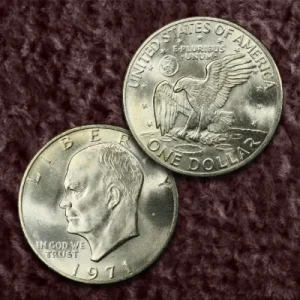
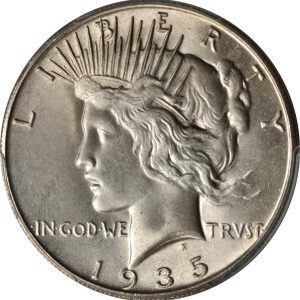
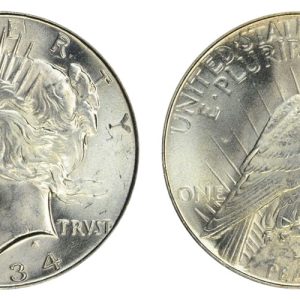
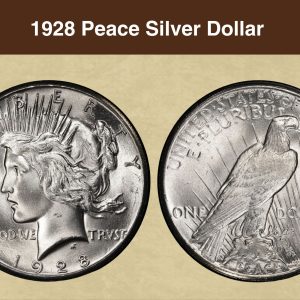
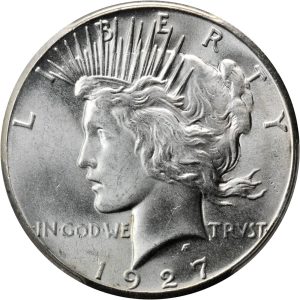
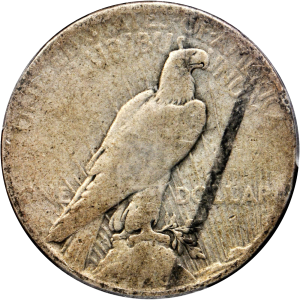
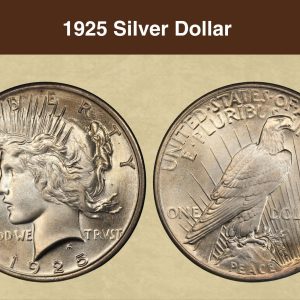
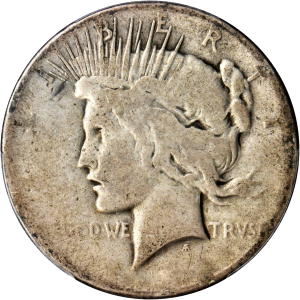
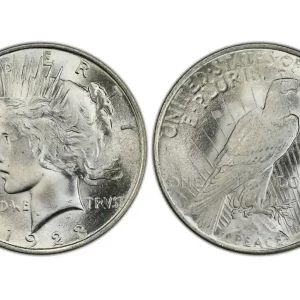
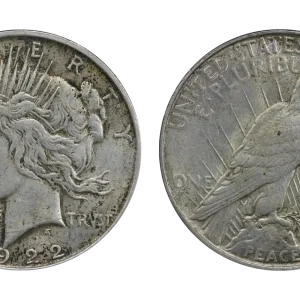
What 1902 silver dollar has no mint mark?
This Morgan dollar was struck at the Philadelphia Mint which is America’s main mint, oldest and most historic Mint. The Philadelphia Mint produced 53.42 % of all Morgan dollars issued between 1878 and 1921 The Philadelphia Mint Morgan does not bear a Mint Mark like the branch mints.
How much is a 1902 o silver dollar worth?
A 1902-O Morgan Silver Dollar is worth approximately $50-$65 in circulated condition and can range from $100 to $5,300+ in uncirculated (Mint State) condition, depending on the specific grade and overall condition. High-grade examples, especially those in pristine condition (MS-65 and above), are more valuable, with significant price increases for higher grades like MS-66 and MS-67.
Where is mint mark O?
The “O” mint mark on United States coinage signifies that the coin was minted at the branch U.S. Mint in New Orleans, Louisiana. The New Orleans Mint, also known as the “Crescent City” mint, was operational from 1838 to 1861 and again from 1879 to 1909.
What is the hardest Morgan silver dollar to find?
The 1895 Proof is the rarest Morgan dollar among its years of issue, as well as a key date. Its extreme scarcity, combined with an enduring historical mystery, has elevated it from elusive to legendary. The Morgan silver dollar is one of the most iconic and highly sought-after coins.